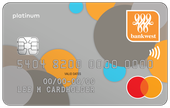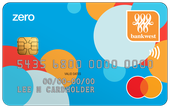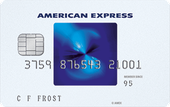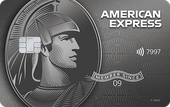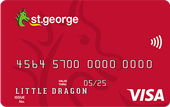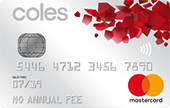
Zero cost.
What is a no annual fee credit card?
A no annual fee credit card is designed to provide the benefits of using a credit card without the ongoing cost of an annual fee. These cards are popular with first time card users, students, pensioners, or individuals looking to minimise the cost of credit while still having the flexibility that a credit card offers.

Types of no annual fee credit card offers
In Australia, there are two types of no annual fee credit cards.
1. Ongoing $0 annual fee offers
These cards have no annual fee for the life of the card. This is the most straightforward option, as you don’t need to worry about the fee after an introductory offer ends, or meeting specific criteria to keep the card fee-free. Popular for those looking for access to credit they can use when necessary without having to pay for the privilege.
2. Introductory no annual fee credit cards
Some cards waive the annual fee for an introductory period, typically for the first 12 months, before reverting to the standard annual fee. These introductory offers can be appealing, especially if paired with a 0% balance transfer. Be sure to check what the ongoing annual fee is once the introductory period ends.

Expert opinion on the mistake people make most often with no annual fee cards

David Boyd, co-founder of Credit Card Compare, explained further on what he thinks the biggest mistake Australians make when they get a no annual fee credit card.
Some credit cards have no annual fee for the first year, but will charge an annual fee for subsequent years. Make sure you are clear about what it is you are signing up for so you don't get a surprising charge in a year's time.

How do no annual fee credit cards work?
Credit cards with an annual fee usually come with additional perks such as earning rewards points, airport lounge access, free travel insurance, etc. The higher the fee, the better the package of benefits is.
But it works the other way too. Credit cards with no annual fee have few, if any additional perks and benefits other than the line of credit itself. Here’s how no annual fee credit cards operate.
- Similar to other credit cards. These cards work just like any credit card in that you can make purchases and borrow against your credit limit, with up to 55 interest-free days available on purchases provided you pay off your balance in full each month. The key difference is that there is no fee just for having the card.
- Fewer features and perks. These cards usually come with fewer features compared to premium cards. You’re less likely to earn rewards points or get perks like frequent flyer points and other benefits on cards with no annual fee.
- Lower interest rates. Interest rates on no annual fee cards vary significantly between issuers, but are more likely to be on the lower end since they target users whose primary objective is to save money. However, some issuers offset the lack of an annual fee with higher rates.
If you’re specifically looking for a card that offers rewards like Velocity Points, Qantas Points or business credit cards without annual fees, there are a few options available although they are rare. There is a selection of frequent flyer cards with no annual fee available.

Trade-offs with no annual fee credit cards
Card issuers are in the business of making money, so credit card benefits have to be paid for. Low-fee and no-fee cards have fewer benefits as a result.
- Missing rewards points and travel benefits. Credit card annual fees go some of the way towards paying for the perks that accompany mid-range and premium cards, such as rewards points, travel insurance and airport lounge access. As a result, no annual fee credit cards usually have only basic features. Yet they often have introductory 0% balance transfer or purchases balance offers, and both Coles and American Express have no annual fee credit cards that earn rewards points, albeit at a low rate.
- High interest rates. The other benefit you'll miss is a low interest rate on purchases and cash advances. While it is possible to score low-interest credit cards with no annual fee for the first year, most cards with an ongoing $0 annual fee have an interest rate around the 20% p.a. mark.
- Low credit limits, stricter eligibility conditions. Once again, these budget cards are not aimed at big spenders and are not necessarily any easier to get. Their credit limits are also may come with tougher eligibility criteria and a low credit limit.
- Customer service and security features. Before making your decision, consider the card issuer's reputation for customer service. Make sure you'll get the same level of service, fraud protection, secure online shopping and card-freezing options as fee-paying customers.

Fees to be aware of besides the annual fee
Having a no annual fee credit card does not mean that you will pay no fees at all. Depending on the way you use your card, you could incur some of the following fees:
- Monthly fee. Some credit cards — the Westpac Flex and NAB StraightUp (currently unavailable) cards, for example — have no annual fee and no interest charges, but you will pay a monthly fee, typically starting at $10, in any month when you don't pay off your balance in full.
- Interest charges. Most credit cards offer between 44 and 55 interest-free days on purchases, but you only qualify for these interest-free days if you've paid off your total account balance in the preceding month (the exception being the monthly fee cards just mentioned). Otherwise, if you carry a balance from month to month on your no annual fee credit card, you'll be hit with interest charges, which can be as high as 20% p.a. or more.
- Late payment fee. When you miss the payment due date — even by one day — most credit cards charge a late payment fee, which can range from $9 to $35. But the monthly fee credit cards described above don't charge late payment fees.
- Cash advance fee. Withdrawing cash from a credit card is an expensive habit, since cash advances don't qualify for interest-free days and the interest rate charged is often higher than the interest rate on purchases. But you'll also be slugged with a cash advance fee – the greater of 2%-4% of the amount advanced or a $2-$5 flat fee.
- Over limit fee. Many credit cards simply won't allow you to exceed your credit limit. Instead, your purchase transaction will be declined. However, there are some cards which will allow you to temporarily exceed your limit, and in this case you will be asked to consent to being charged an over limit fee — typically in the range $0-$20 — as part of the T&Cs when the card is issued.
- Foreign transaction fee. While there are credit cards available with no foreign transaction fee, many cards charge a fee of 2%-3% of the purchase price for foreign currency or overseas website purchases.
- Additional cardholder fee. Some credit card issuers will ask you to pay an additional annual fee if you want to have another card issued on your account, for use by your spouse or child for example. If you choose a credit card with no annual fee, make sure that the no-fee offer extends to additional cardholders.
- Emergency card replacement fee. If your card is lost or stolen and you need a replacement in a hurry, the card issuer may charge a fee of $20 or more for a replacement delivered within Australia, or up to $200 for a replacement while you are travelling overseas.

Expert explains why having a no annual fee credit card can be useful

Andrew Boyd, co-founder of Credit Card Compare, explains one of the lesser appreciated benefits of having an no annual fee credit card.
If you're wondering what the point of having a no annual fee credit card is when you don't really need one, they can come in handy when you least expect it.
You'll know what I mean if you've ever travelled without your wallet. It causes all kinds of issues when checking into various hotels since they generally want to swipe the physical card.

How to choose a no annual fee credit card
Consider the following factors before signing up.
- Interest rates. Look for a card with competitive interest rates to save on finance charges. If the card has an introductory offer, check what rate it reverts to.
- Rewards programs. Only a few no annual fee cards come with rewards points or cashback. Those that do are less rewarding than those with an annual fee.
- Additional fees. While the annual fee may be waived, don't forget to check what the other fees are, such as late payment fees or foreign transaction fees.
- Perks and benefits. Most credit cards with no annual fee are fairly limited in terms of any additional benefits beyond a line of credit. It's exceedingly rare for them to have features like travel insurance, purchase protection, and concierge services.
- Credit limit. These cards tend to be relatively no-frills, so above average credit limits are unlikely.

How to get the most from credit card with no annual fee
Need a card with no annual fee for a rainy day and don't think you'll use it much? Here are a few tips to get the most out of it.
- Check your statement regularly. Keep track of your spending and payments to avoid unnecessary fees.
- Always pay on time. Timely payments means you avoid interest charges and can improve your credit score.
- Pay your statement balance in full. This avoids building up debt and keeps your credit utilisation low, which is good for your credit report.
- Maximise rewards. If your card is partnered with a rewards program, be strategic with your spending to maximise your benefits.

What to consider before you compare and apply
There's no doubt that the best no annual fee credit cards in Australia can save you money, year after year. You won't see that pesky fee cropping up on your statement one every 12 months, which will make it an ideal card if you are operating on a low budget or just want a no annual fee credit card as an emergency or backup card.
However, most savvy credit card users will aim to put as much as possible of their spending through their card and pay off their balance in full each month, to maximise the benefit of their interest-free days and avoid paying interest. This means that even moderate spending — say $2,000 per month — on a rewards points credit card will usually more than cover the cost of the annual fee if points are spent wisely.
That's before counting the value of any insurance and travel benefits. So, by all means choose one of the top credit cards with no annual fee, but make sure you're not missing out on reaping rewards which would make paying a fee very worth your while.


